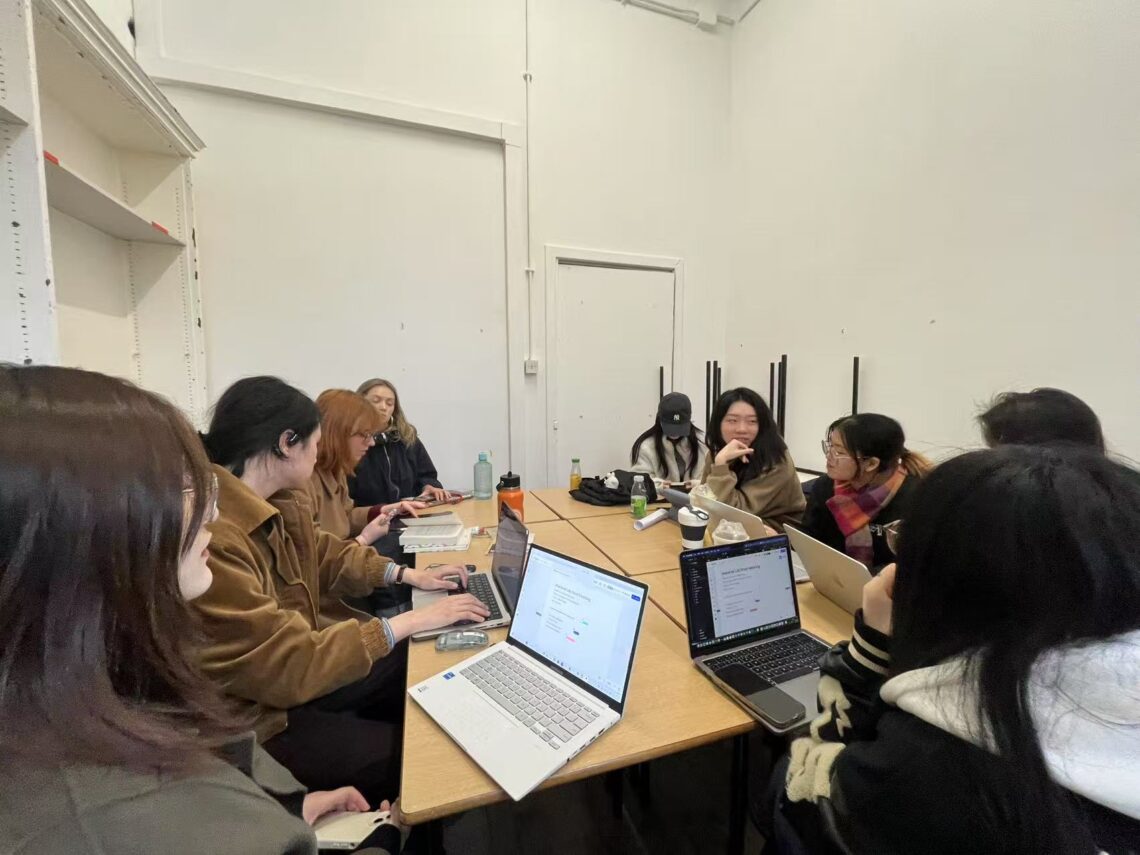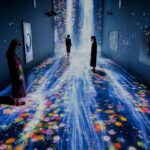This week marked a turning point in my curatorial thinking through two key collective activities: our group visit to Summerhall and the peer review session. Both provided critical momentum for the development of my individual project, “The One Behind the Door”, a dynamic Expanded Cinema installation where audiences shape narrative sequences through bodily interaction.
1. Summerhall Visit: Rethinking Space and Audience Behaviour
Visiting Summerhall, with its historically layered, semi-domestic yet labyrinthine spaces, profoundly expanded how I imagined the spatial experience of my project .
Unlike the clinical white cubes often associated with contemporary exhibitions, Summerhall’s warm, unpredictable architecture emphasized how space itself conditions audience movement — an insight crucial to my installation, where bodily motion edits the cinematic flow.
Specifically:
- Observing the informal room transitions and textured surfaces made me realize that my original design of clean-cut projection spaces risked feeling too sterile. Inspired by Summerhall’s spatial intimacy, I now plan to allow subtle architectural irregularities (partial walls, layered fabrics, uneven lighting) to create a more immersive filmic world.
- I also noticed how visitors intuitively explored — lingering at thresholds, peeking through doorways, hesitating before entering darker spaces.
These micro-movements mirror exactly the kind of instinctive bodily “editing” that my installation seeks to trigger. It affirmed that audiences can perform intuitive cinematic thinking without needing explicit instruction, aligning with Grammel’s emphasis on open-ended curatorial structures (Grammel, 2010).
2. Peer Review Session: Critical Feedback on Audience Experience and Narrative Density
During our peer review workshop, I presented the core concept of my project and received valuable feedback from classmates.
Positive Reinforcements:
- Many peers found the concept of the body as the editing tool exciting and immediately graspable without verbal explanation. This validated my commitment to non-verbal Expanded Cinema trusting physical intuition (Mulvey, 2011).
- There was strong support for the idea of a “cold start fragment” — encountering an unresolved cinematic scene on entry — as emotionally engaging.
Critical Challenges:
- Some concerns arose that feedback between action and image might feel too abstract or slow for general audiences. As a result, I plan to embed more immediate audiovisual micro-feedback (small sound cues, flickering subtitles) for even minimal body movements.
- Others questioned whether narrative coherence would be too elusive. Reflecting on suggestions, I aim to structure action-emotion mappings more clearly, inspired by films like The Holy Mountain (1973) for mythic narrative rhythms (Jodorowsky, 1973).
3. The Collective Dynamic: Beyond Individual Reflection
The informal flower arrangement and tarot card sessions also profoundly influenced my thinking.
Watching classmates intuitively collaborate, exchange flowers, and interpret imagery reminded me that audiences often learn from each other in shared spaces. This affirmed my plan for a “Layered Experience Model” in the exhibition: a free exploration zone for peer observation before entering the high-immersion zone.
Thus, collective activities reinforced that:
- Curating designs encounters not only between artworks and individuals, but between individuals themselves (O’Neill, 2012).
- Expanded Cinema can operate both individually and socially — bodies influencing one another’s perception of cinematic space.
Conclusion
In sum, both the visit to Summerhall and the peer review workshop significantly advanced my project by making me rethink the nuances of space, action feedback, and collective behaviours. They demonstrated that meaning in Expanded Cinema emerges not only from technical systems but from the unpredictable, often beautiful ways audiences respond, hesitate, imitate, and act together.
As I continue refining The One Behind the Door, I am committed to designing an experience that is structurally open but emotionally resonant — where audiences co-author their cinematic experiences through their own movements and intuitions.
References
- Grammel, S. (2010) ‘On the Curatorial’, in Curating and the Educational Turn. London: Open Editions.
- Jodorowsky, A. (1973) The Holy Mountain [Film]. Mexico: ABKCO Films.
- Mulvey, L. (2011) ‘Cinematic Time and the Moveable Image’, Framework: The Journal of Cinema and Media, 52(1), pp. 34-45.
- O’Neill, P. (2012) The Culture of Curating and the Curating of Culture(s). Cambridge, MA: MIT Press.







